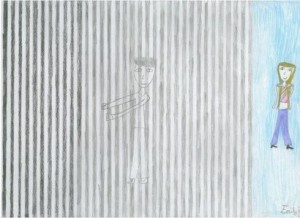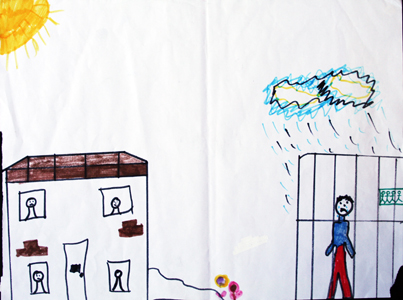
Children of asylum seekers and children who are asylum seekers in prison. What is their crime? Seeking asylum. These are children fleeing violence, in their households, in their communities, in their countries of birth. And how do `we’ respond? Prison.
Australia is bracing for a serious uptick in children in detention mutilating themselves: “Self-mutilation in Australia’s detention centres is increasing with the number of recorded cases quadrupling in the past year and mental health experts bracing for worse to come as children begin cutting themselves.” Why are the children cutting themselves? The prisons are becoming more overcrowded, the time spent in prison is increasing, and government officials are `promising’ increased rates of deportation. Who are these scoundrel children? Afghans. Sri Lankans.
According to Harry Minas, director of the Centre for International Mental Health at the University of Melbourne, the conditions for imprisoned asylum seekers and immigrants is returning to the dark days of 2001 – 2003, “when children drank shampoo and detainees sewed their lips together.” All of this has happened before, and it is happening again. We are told the first time it was tragedy.
Why are children cutting themselves? There is no school, there are no sustaining structures, there is no home life, there is no community, there is no future, and, increasingly, there is no past. There is only prison. From the State, there is only the promise that the rate of deportation to Afghanistan will increase. For the children, there is only threat and more threat.
The children are cutting themselves, they are poisoning themselves, because they are children, and self-harm is the only electoral process allowed them by the modern democratic nation-State. There are currently around 700 children in immigrant detention `facilities’ in Australia.
These children of asylum-seekers, these children asylum seekers are viewed as budget targets, as opportunities for greater efficiency. In Britain, it was announced today that “thousands of child asylum-seekers are to be removed … under savage budget cuts being drawn up by the Home Office ahead of this week’s comprehensive spending review. A briefing document sent to ministers sets out detailed proposals to remove child refugees before they reach 17 years old, and recommends bearing down on benefits given to asylum seekers…. Of greatest concern will be a policy of mass removal of unaccompanied children before they reach 17 and a half, the age when they are deemed to be adult asylum-seekers. Under current rules unaccompanied child asylum-seekers are usually granted leave to remain in the UK until they can make a fresh asylum application as an adult. There are more than 4,200 unaccompanied child asylum-seekers in Britain, with most being supported in local authority social services homes.”
The opportunity for economy here, for efficiency, is great. It is so great that the United Kingdom is willing to invest £4m in a `re-integration center’ in Afghanistan. The children of Afghanistan have traveled far, to seek asylum, to seek haven, to escape the violence of the Big War and the myriad forms of violence of the more intimate wars of the everyday. These children shall be returned to Afghanistan, after having been subjected to the democratic rule of law and of due process.
The planes are waiting, the ministers are promising swift, increasing, and ever more efficient returns. The children who have come asking for help will be returned to Afghanistan because Afghanistan is a better place … for them. It must be. It has been democratically decided. Those children who have not been allowed to kill themselves shall be sent `home’. The modern democratic nation-State is bracing itself for mass removals, for bearing down, for the mutilation of children. The children who seek asylum and the children of those who seek asylum have been targeted. The children of Afghanistan haunt the modern democratic nation-State.
(Photo Credit: Australian Human Rights Commission)





